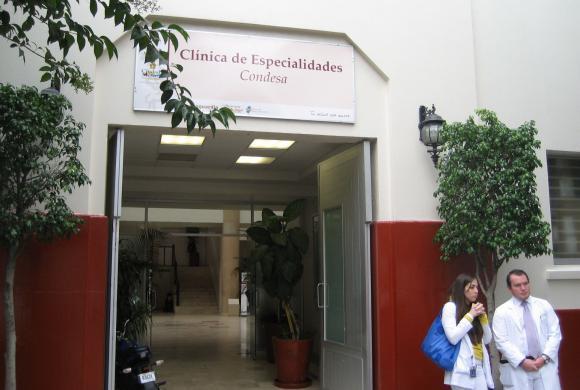HIV risks high in Mexico City's male sex trade

A new study documents the stark health dangers of the male sex trade in the streets, hotels, and discotheques of Mexico City. Lead author and health economist Omar Galárraga's point in making the grim assessment of the legal but perilous market is to find an incentive that might reduce the spread of HIV and other diseases in the nation's community of men who have sex with men.
"It's a very highly at-risk population," said Galárraga, assistant professor of health services, policy and practice in the Brown University School of Public Health. For the study, published in theJournal of the International AIDS Society, his team conducted interviews and infection tests with 267 male sex workers who come to the city's Clínica Especializada Condesa.
Sexually transmitted infections are prevalent among the workers, the study reports. In the sample, 38 percent had HIV, 21 percent had syphilis, 10 percent had chlamydia, 3 percent had active hepatitis B, 2 percent had gonorrhea, and 1 percent had hepatitis C.
Many of the sex workers were not aware of or were confused about their health status. Of the 100 confirmed by testing to have HIV, 14 did not know if they had it, 11 said they did not have it, and another 16 didn't want to say (even though they agreed to testing). Similar rates applied to the other diseases.
The high prevalence of disease (and the lack of personal awareness) is serious because the workers make many sexual contacts every week. On average, the sex workers reported engaging in sex with more than four paying customers and about three non-paying partners in the week prior to their interview. The sex partners were almost always male.
Incentives and disincentives for condom use
One of the best ways to prevent the spread of disease is condom use, but the study found condom use was also lacking. The workers reported using condoms only 78 to 84 percent of the time.
Why isn't condom use more common, given the high risk of becoming seriously ill? One reason the study found is that sex workers can make 34.5 percent more money, on average, if they forgo the condom. The median price they charged for sex was about $32, but workers can earn more than $40 without protection.
With all this information in hand, Galárraga and his colleagues have been working to test an idea for countering the market incentive to forgo condoms and to keep workers connected to health care services, such as infection testing. Their idea is to offer payments in the form of food and grocery vouchers twice a year on the condition that workers use condoms to stay healthy. If follow-up testing shows they don't acquire new diseases, they can get vouchers every six months valued at as much as $75. In a prior study, Galárraga and his colleagues found that workers said they would be willing to change behavior in exchange for that much.
"Avoiding clients who pay higher prices for unprotected sex implies monetary losses for male sex workers," the researchers wrote in the study. "Thus compensation in the form of economic incentives for self-protection can offer one method for reducing risk behaviors and improving individual and population health."
The results of a pilot trial are pending. The researchers hope to expand testing to a wider group. Since performing this study they have been in contact with hundreds more sex workers.
In addition to Galárraga, the study's authors are Sandra G. Sosa-Rubí, Carlos Conde-Glez, and Sergio Bautista-Arredondo of the Instituto Nacional de Salud Pública in Mexico; Andrea González, Florentino Badial-Hernández, and Luis Juárez-Figueroa of Clínica Especializada Condesa in Mexico City; and Caroline Kuo, Don Operario, and Kenneth Mayer of Brown University.
© MD News Daily.
